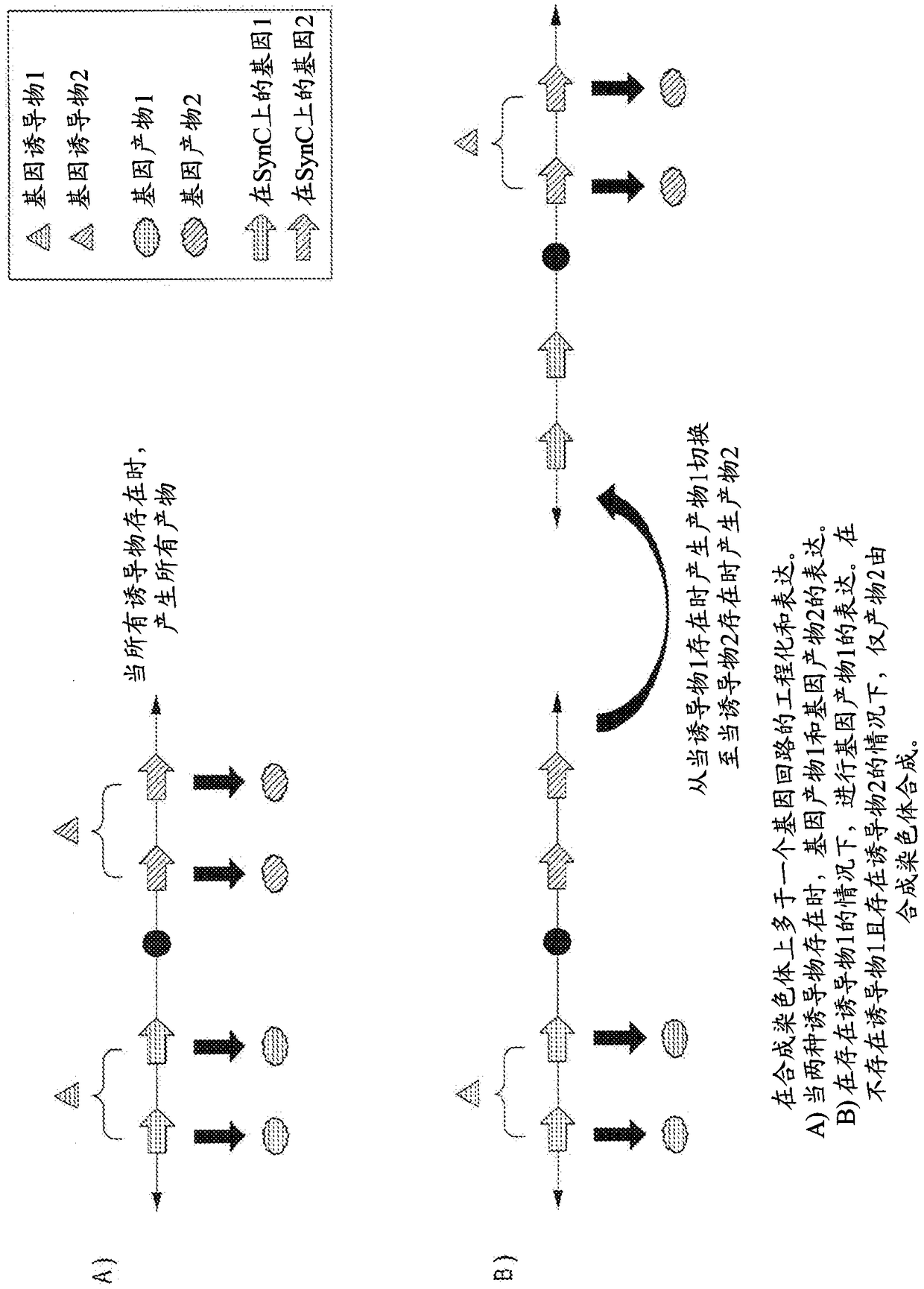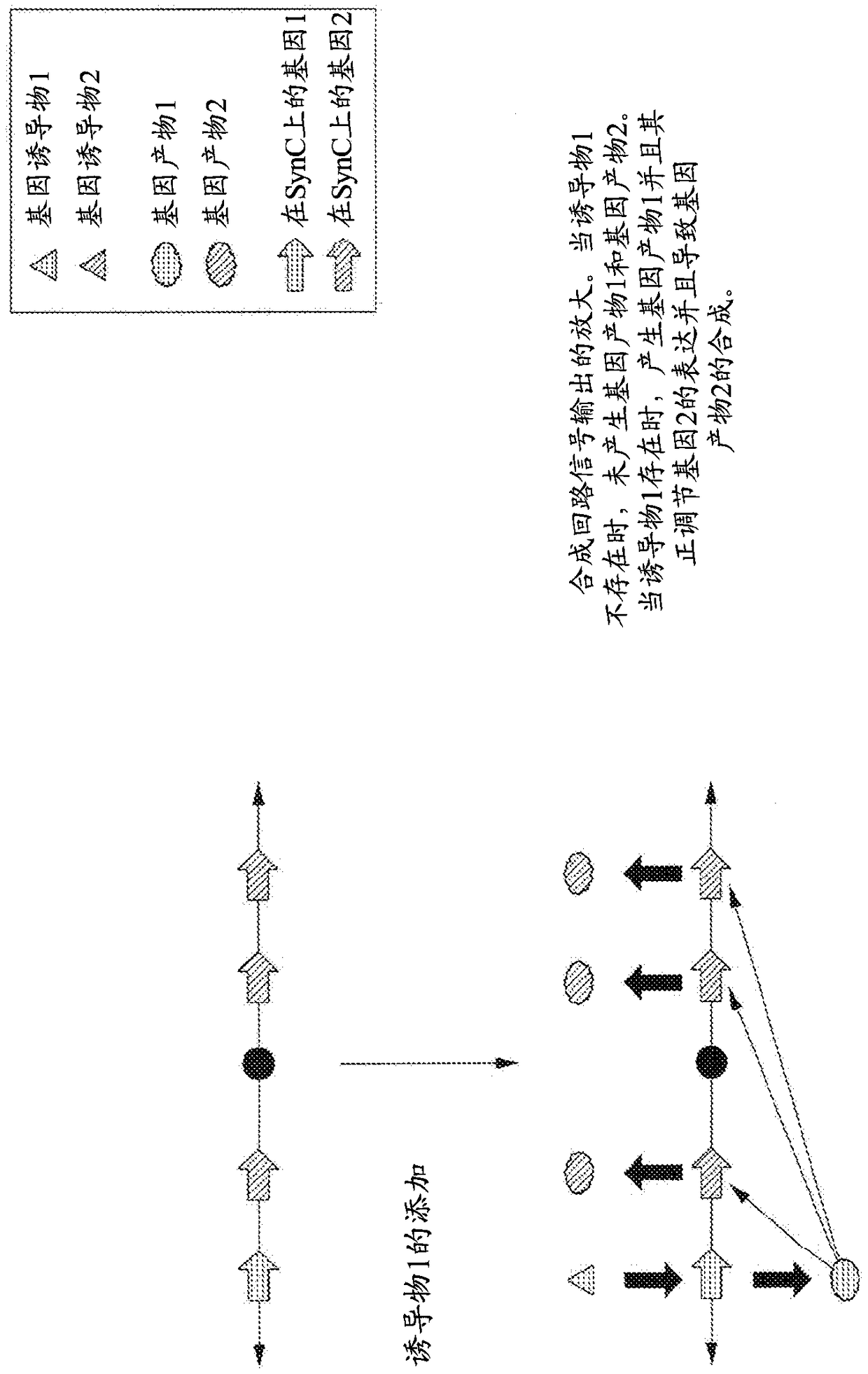Methods for creating synthetic chromosomes having gene regulatory systems and uses thereof
A technology for chromosome regulation and control, applied in biochemical equipment and methods, other methods for inserting foreign genetic materials, stably introducing foreign DNA into chromosomes, etc., can solve problems that cannot constitute prior art
- Summary
- Abstract
- Description
- Claims
- Application Information
AI Technical Summary
Problems solved by technology
Method used
Image
Examples
Embodiment 1
[0081] Example 1: De Novo Generation of Satellite DNA-Based Artificial Chromosomes
[0082] For de novo generation of synthetic chromosomes, exogenous DNA sequences were introduced into the HT1080 synthetic chromosome producing cell line, and upon integration into the interarm heterochromatin region of acrocentromeric chromosomes, shorting of acrocentromeric chromosomes was triggered. Large-scale amplification of arms (rDNA / centromeric regions). During the amplification event, the centromere is duplicated, producing a dicentric chromosome with two active centromeres. Subsequent mitotic events lead to cleavage and segregation of dicentric chromosomes, resulting in fragments approximately 20-120 Mb in size, consisting mainly of satellite repeats with subdomains of the co-amplified transfected transgene , this subdomain may also contain an amplified rDNA copy. Newly generated synthetic chromosomes were verified by observing fluorescent chromosome painting (or FISH) via endogeno...
Embodiment 2
[0084] Example 2: Generation of TET repressor and Cumate repressor delivery vectors.
[0085] One embodiment of the regulatable promoter system to be incorporated on the synthetic platform chromosome is TET-ON, a doxycycline-inducible expression system (Clontech, Inc.). The pAPP500 vector was used as the backbone delivery vector to insert the TET-ON transcription regulator into the synthetic chromosome. Briefly, the pEF1alpha-Tet3G transcriptional regulator was isolated by restriction digestion (BsrGI and HindlII), then processed to fill in the 5' end, and ligated into pAPP500 digested with EcoRY. The resulting plasmid vector (pAPP510; Figure 6 : In pApp590, the following elements are present: SV40\polyA / signal=SV40polyA; attB, AttL_Zeo=site-specific recombination site; human / EF1α / Pr=promoter; Tet-On / 3G=transcriptional regulator ; f1 origin = origin of replication; ZeoR = zeocin resistance) contains a promoterless zeocin resistance encoded behind the attB recombination site...
Embodiment 3
[0087]Example 3: Loading of TET-ON and Cumate-ON transcriptional regulators onto synthetic chromosomes
[0088] The pAPP510 and pAPP590 vectors were used as delivery vectors to sequentially insert the TET-ON transcriptional regulator and the Cumate-ON transcriptional regulator, respectively, into synthetic chromosomes. On day 0, a recipient cell line (eg, HT1080) containing a synthetic chromosome (hSynC) is seeded at ~4E4 cells / well of a 24-well dish such that the wells are ~70% confluent by day 1. Cells were incubated at 37°C, 5% CO 2 Incubate overnight in appropriate medium (eg, DMEM+10% FC3 for HT1080). On day 1, both the delivery vector (eg, pAPP510) and the plasmid encoding the recombinant protein (eg, pCXLamIntR) were transfected into HT1080 cells following the manufacturer's instructions (Fisher Scientific, Lipofectamine LTX with Plus reagent). Transfections were performed in duplicate to allow comparison of drug selection and direct cell sorting. Dilute Lipofectamin...
PUM
 Login to View More
Login to View More Abstract
Description
Claims
Application Information
 Login to View More
Login to View More - Generate Ideas
- Intellectual Property
- Life Sciences
- Materials
- Tech Scout
- Unparalleled Data Quality
- Higher Quality Content
- 60% Fewer Hallucinations
Browse by: Latest US Patents, China's latest patents, Technical Efficacy Thesaurus, Application Domain, Technology Topic, Popular Technical Reports.
© 2025 PatSnap. All rights reserved.Legal|Privacy policy|Modern Slavery Act Transparency Statement|Sitemap|About US| Contact US: help@patsnap.com



